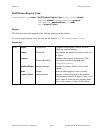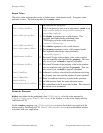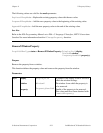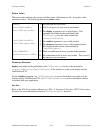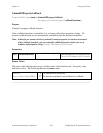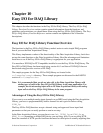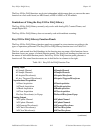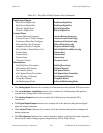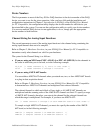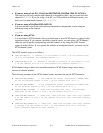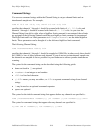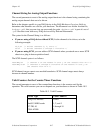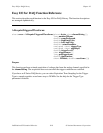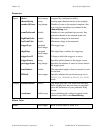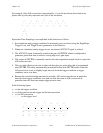
Easy I/O for DAQ Library Chapter 10
LabWindows/CVI Standard Libraries 10-4 © National Instruments Corporation
Device Numbers
The first parameter to most of the Easy I/O for DAQ functions is the device number of the DAQ
device you want to use for the given operation. After you have followed the installation and
configuration instructions in Chapter 1, Introduction to NI-DAQ, of the NI-DAQ User Manual
for PC Compatibles, the configuration utility displays the device number for each device you
have installed in the system. You can use the configuration utility to verify your device numbers.
You can use multiple DAQ devices in one application; to do so, simply pass the appropriate
device number to each function.
Channel String for Analog Input Functions
The second parameter to most of the analog input functions is the channel string containing the
analog input channels that are to be sampled.
Refer to Chapter 2, Hardware Overview, in your NI-DAQ User Manual for PC Compatibles to
determine exactly what channels are valid for your hardware.
The syntax for the Channel String is as follows:
•
If you are using an MIO board, NEC-AI-16E-4, or NEC-AI-16XE-50,
list the channels in
the order in which they are to be read, as in the following example:
"0,2,5" /* reads channels 0, 2, and 5 in that order */
"0:3" /* reads channels 0 through 3 inclusive */
•
If you are using AMUX-64T boards:
You can address AMUX-64T channels when you attach one, two, or four AMUX-64T boards
to a plug-in data acquisition board.
Refer to Chapter 2, Hardware Overview, in your NI-DAQ User Manual for PC Compatibles
to determine how AMUX-64T channels are multiplexed onto onboard channels.
The onboard channel to which each block of four, eight, or 16 AMUX-64T channels are
multiplexed and the scanning order of the AMUX-64T channels are fixed. To specify a range
of AMUX-64T channels, therefore, you enter in the channel list the onboard channel into
which the range is multiplexed. For example, if you have one AMUX-64T:
"0" /* reads channels 0 through 3 on each AMUX-64T board in that order */
To sample a single AMUX-64T channel, you must also specify the number of the AMUX-
64T board, as in the following example:
"AM1!3" /* samples channel 3 on AMUX-64T board 1 */
"AM4!8" /* samples channel 8 on AMUX-64T board 4 */



